The modern-day African Great Lakes state of Tanzania dates formally from 1964,when it was formed out of the union of the much larger mainland territory of Tanganyika and the coastal archipelago of Zanzibar. The former was a colony and part of German East Africa from the 1880s to 1919 when,under the League of Nations,it became a British mandate. It served as a British mir II]],providing financial help,munitions,and soldiers. In 1947,Tanganyika became a United Nations Trust Territory under British administration,a status it kept until its independence in 1961. The island of Zanzibar thrived as a trading hub,successively controlled by the Portuguese,the Sultanate of Oman,and then as a British protectorate by the end of the nineteenth century.
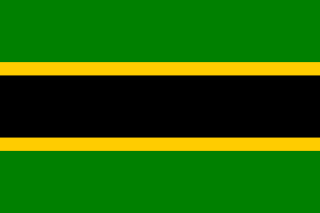
Tanganyika was a sovereign state,comprising the mainland part of present-day Tanzania,that existed from 1961 until 1964. It first gained independence from the United Kingdom on 9 December 1961 as a Commonwealth realm headed by Queen Elizabeth II before becoming a republic within the Commonwealth of Nations a year later. After signing the Articles of Union on 22 April 1964 and passing an Act of Union on 25 April,Tanganyika officially joined with the People's Republic of Zanzibar to form the United Republic of Tanganyika and Zanzibar on Union Day,26 April 1964. The new state changed its name to the United Republic of Tanzania within a year.

Julius Kambarage Nyerere was a Tanzanian politician,anti-colonial activist,and political theorist. He governed Tanganyika as prime minister from 1961 to 1962 and then as president from 1962 to 1964,after which he led its successor state,Tanzania,as president from 1964 to 1985. He was a founding member and chair of the Tanganyika African National Union (TANU) party and of its successor,Chama Cha Mapinduzi,from 1954 to 1990. Ideologically an African nationalist and African socialist,he promoted a political philosophy known as Ujamaa.
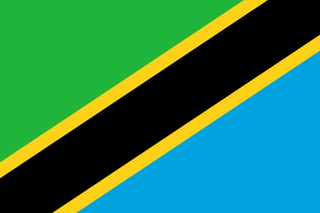
The national flag of Tanzania consists of a gold-edged black bend,divided diagonally from the lower hoist-side corner,with a green upper triangle and light blue lower triangle. Adopted in 1964 to replace the individual flags of Tanganyika and Zanzibar,it has been the flag of the United Republic of Tanzania since the two states merged that year. The design of the present flag incorporates the elements from the two former flags. It is one of a relatively small number of national flags incorporating a diagonal line,with other examples including the DR Congo,Republic of the Congo,Namibia,Saint Kitts and Nevis,Trinidad and Tobago and Brunei.

The President of the United Republic of Tanzania is the head of state and head of government of Tanzania.

The Tanganyika African National Union (TANU) was the principal political party in the struggle for sovereignty in the East African state of Tanganyika. The party was formed from the Tanganyika African Association by Julius Nyerere in July 1954 when he was teaching at St. Francis' College. From 1964 the party was called the Tanzania African National Union. In January 1977 the TANU merged with the ruling party in Zanzibar,the Afro-Shirazi Party (ASP),to form the current Revolutionary State Party or Chama Cha Mapinduzi (CCM). The policy of TANU was to build and maintain a socialist state aiming towards economic self-sufficiency and to eradicate corruption and exploitation,with the major means of production and exchange under the control of the peasants and workers.
The Zanaki are a Bantu ethnolinguistic group from the heart of Mara Region,Tanzania,to the east of Lake Victoria. The group is subdivided into the Birus and the Buturis.

The coat of arms of Tanzania comprises a warrior's shield which bears a golden portion on the upper part followed underneath by the flag of Tanzania.
Godfrey Mwakikagile is a Tanzanian scholar and author specialising in African studies. He was also a news reporter for The Standard —the oldest and largest English newspaper in Tanzania and one of the three largest in East Africa. Mwakikagile wrote Nyerere and Africa:End of an Era —a biographical book on the life of former Tanzanian President Julius Nyerere set in the backdrop of Africa's early post-colonial years and the liberation wars in the countries of southern Africa in which Nyerere played a major role.
United Tanganyika Party (UTP) was a political party in Tanganyika. It was established by the British governor Edward Twining in 1956 as a counter to the Tanganyika African National Union (TANU),an African nationalist party led by Julius Nyerere. The UTP was a multi-racial party that included all of the white members of the Legislative Council as well as a majority of the Asian members and around half of the black African members. Twining did not intend that the UTP would defeat TANU in elections,which he considered impossible,but that it should be used as a tool to pressure Nyerere into an agreement over independence. The UTP argued against independence at the United Nations.

Oscar Salathiel Kambona was the first Minister of Foreign Affairs of Tanganyika from 1963 to 1966.
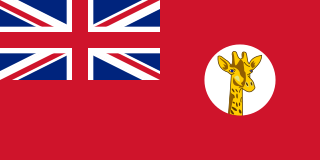
Tanganyika was a colonial territory in East Africa which was administered by the United Kingdom in various guises from 1916 until 1961. It was initially administered under a military occupation regime. From 20 July 1922,it was formalised into a League of Nations mandate under British rule. From 1946,it was administered by the UK as a United Nations trust territory. It bordered British East Africa to the North East.
Sir Richard Gordon Turnbull,GCMG was a British colonial governor and the last governor of the British mandate of Tanganyika from 1958 to 1961. Following the country's independence,he was governor-general from 9 December 1961 to 9 December 1962.
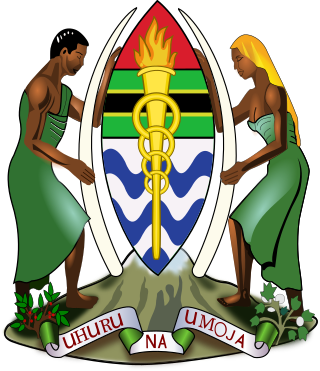
Elizabeth II was Queen of Tanganyika from 1961 to 1962,when Tanganyika was an independent sovereign state and a constitutional monarchy. She was also the monarch of other sovereign states,including the United Kingdom. Her constitutional roles in Tanganyika were mostly delegated to the governor-general of Tanganyika.

Amir Habib Jamal was a Tanzanian politician and diplomat who served as a Minister under various portfolios in the Julius Nyerere administration. He represented the parliamentary constituency of Morogoro from 1960 to 1985,and was Tanzania's longest-serving Finance Minister and led the ministry for about 12 years.
John Mwakangale was one of the main leaders in the struggle for independence in Tanganyika during British colonial rule. When the country gained independence,Mwakangale joined the first cabinet of Julius Nyerere,the first President of Tanzania as Minister of Labour. Mwakangale is also regarded as a Pan-Africanist and a staunch African nationalist. He was also the first leader whom Nelson Mandela met in 1962 when he escaped from prison seeking assistance from other African leaders. Mandela gave a detailed account about that encounter in his book Long Walk to Freedom.
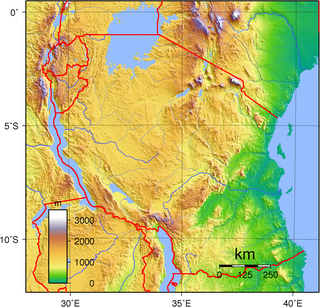
Mainland Tanzania refers to the part of Tanzania on the continent of Africa;excluding the islands of Zanzibar. It corresponds with the area of the former country of Tanganyika.
Erasto Andrew Mbwana Mang'enya was a Tanganyikan/Tanzanian diplomat and politician.
David Bugozi Musuguri was a Tanzanian military officer who served as Chief of the Tanzania People's Defence Force from 1980 until 1988.
The Pan-African Freedom Movement of East and Central Africa (PAFMECA),later renamed the Pan-African Freedom Movement of East,Central and Southern Africa (PAFMECSA) was a political and Pan-Africanist organisation that was formed to campaign for the independence of the countries of East and Central Africa from colonial and white minority rule. The organisation was formed at a conference held in Mwanza,Tanganyika,from 16 to 18 September 1958. Julius Nyerere and Tom Mboya the Kenyan Pan-Africanist and trade unionist were among the founders. Nyerere came up with the idea for the conference.










